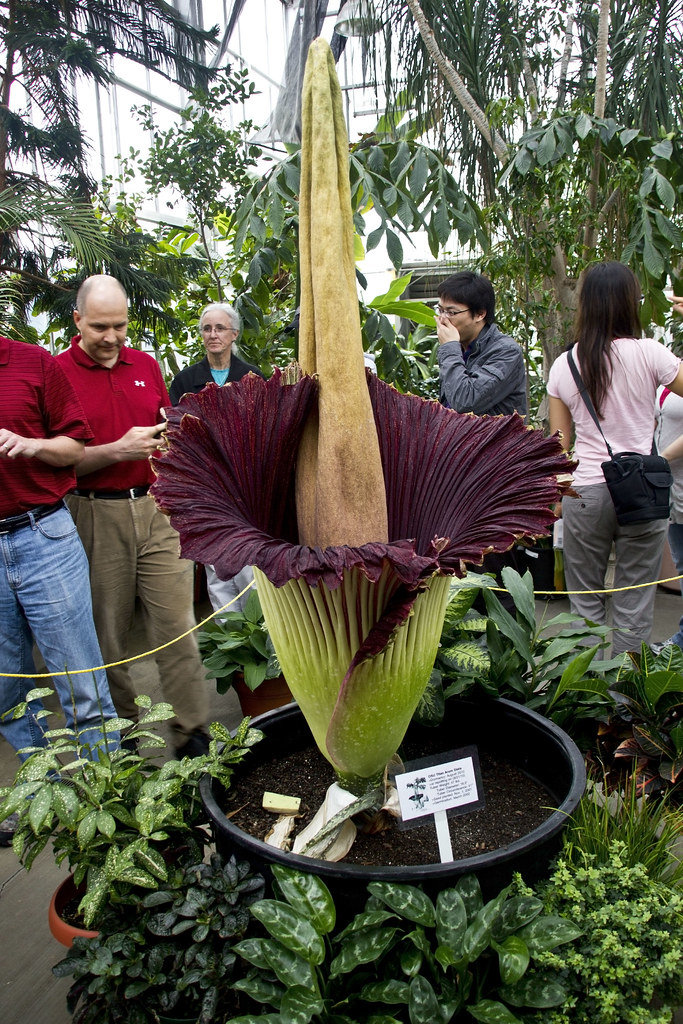
When it comes to plant aromas, we tend to forget that we, as humans, are not the target audience, and these odors were not designed with us in mind—we are really passive spectators to a show that luckily most of us happen to enjoy. This past spring Mother Nature demonstrated just what it means to have a target olfactory audience at Madison’s Olbrich Botanical Gardens. For the first time in about 12 years, one of the four massive titan arum (Amorphophallus titanum) plants that reside at Olbrich bloomed, an event that typically only happens for 24-48 hours at a time and 4-5 times total throughout this plant’s roughly 40 year lifespan. More informally (and aptly) known as the “corpse flower” due to its carcass-adjacent coloring and distinctly foul odor, hundreds of plant enthusiasts and hopeful spectators queued for hours to catch a glimpse and whiff of the pungent plant. Until rare events like this happen, it can be easy to forget just how interesting and complex plants really are. We romanticize and lend meaning to flowers and relish in the sweet fragrance they provide, while often completely overlooking the intricate biological and chemical processes that comprise the science of floral scent.
Continue reading “Making “Scents” of the Mysterious Science of Plant Odors”